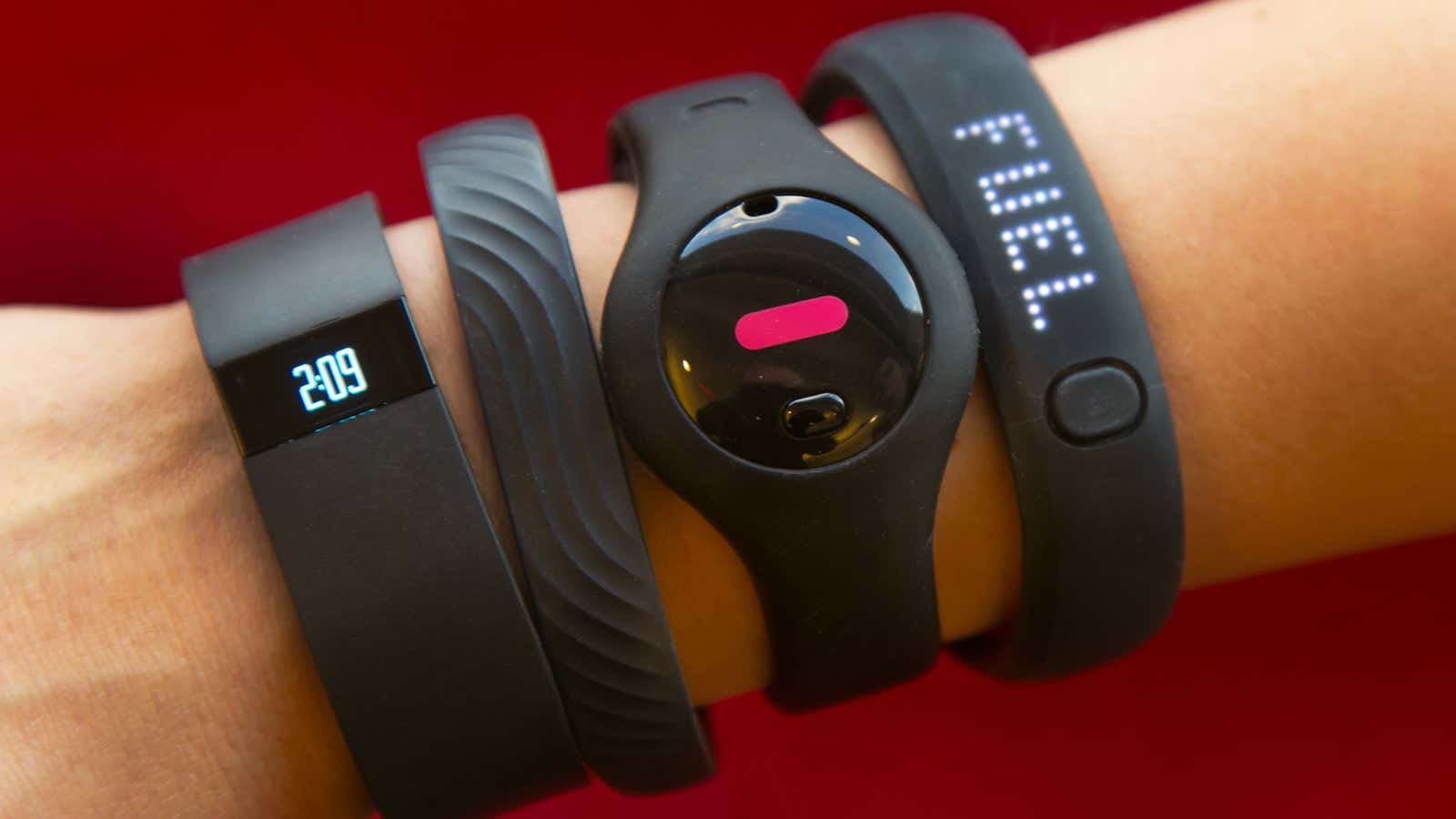It’s hard to convey just how much I didn’t want a smartwatch one week ago.
While I did think that the Pebble Steel was poised to unlock a new chunk of the wearable tech market—those who were interested in wearing a smartwatch, but didn’t want a garish piece of plastic on their wrists—I wasn’t part of that market at all. My iPhone lives in whichever pocket is most easily accessible, and like most of my generation, I’ve spent the better part of a decade developing a reflexive habit of whipping it out to answer an increasing number of questions: Who’s tried to contact me, what time is it, where am I, what’s going on in the world, what social media notifications I have, and so on. So a device that served only to cut down on my phone’s out-of-pocket time? Waste of money.
I started to feel differently almost immediately after putting a FitBit on. Just to clarify, a FitBit isn’t a smartwatch. It’s a fitness tracker, a watch-like device that allows you to monitor your activity throughout the day.
Don’t get me wrong: The device is beautifully designed, and absolutely perfect as an unobtrusive monitor. But knowing that this little pink band is syncing with my phone made me greedy. I want it to have buttons, I told my friends. I want it to do stuff. The minimal interactions I could have with the device—tapping rapidly to put it into sleep mode, for example—awakened a data yearning in me the likes of which I have never known. Now, when I leave my phone in my room and end up in the kitchen, I look down at my wrist wanting texts, games, and other cellphone niceties to appear.
It’s not that I need a wearable computer. But if I’m going to wear one—and that’s basically what a FitBit is—why can’t I check my email on it too? Apple, it turns out, agrees.
It’s been rumored for awhile that the iWatch would function as a health tracker as well as a smartwatch. 9to5Mac now reports that iOS8 will include “Healthbook,” an app for organizing and accessing health data. That suggests such features will be available in an Apple device some time soon. And with senior Apple executives meeting with the US Food and Drug Administration, it’s conceivable Apple wants the watch to be approved as a medical device, which would open the door for use in hospitals, and as an at-home diagnostic tool.
Another obstacle that Apple seems ready to tackle: Size. Smartwatches—and fitness trackers with displays—are, to date, universally bulky. Attractiveness aside, there comes a point when a wearable is just too big for the average wrist.
Apple is rumored to be making the sensors for its watch as small as possible. But batteries must also be really small.
Apple is on that too, according to The New York Times. Recent patents—one for a flexible battery, another for wireless charging, and another for motion-based kinetic charging—could add up to a veritable Manhattan Project of batteries happening over in Cupertino. The flexible battery will be vital for packing an unobtrusive layer of power storage into a sleek band (fingers crossed that it looks something like Todd Hamilton’s concept), and either solar power, magnetic induction or kinetic charging (or, more likely, some combination) might solve the issue of battery life.
Apple has reportedly put out a call for engineers with experience in solar energy, so some subtle sun power might not be too far off. Induction charging would allow a user to power up wirelessly—maybe even while still wearing the device—and kinetic power would charge as you moved your hand, much like a traditional self-winding watch. Without some novel charging method, users are left to plug their wearables in periodically.
A dangerous proposition, TechCrunch points out: If a wearable’s battery dies, and the user finds that her life isn’t suddenly impacted, she may forget why she bought it in the first place.
Such a scenario isn’t that tough to imagine. After all, I didn’t even want a wearable until I had one on. So I might not miss the device, if its stream of data suddenly ran dry.
